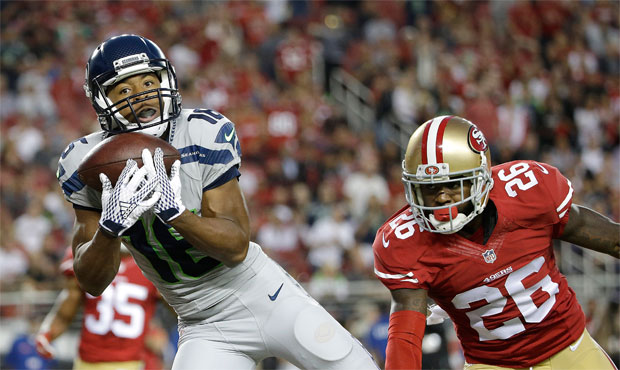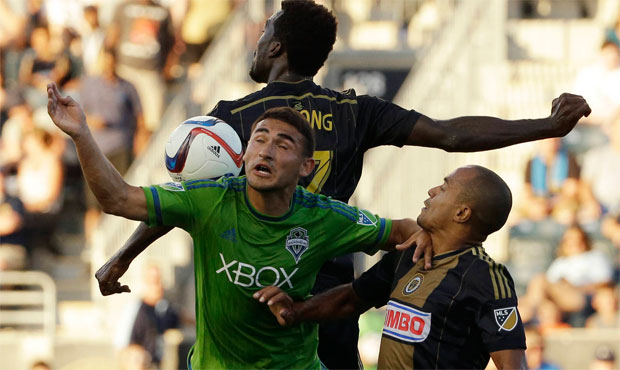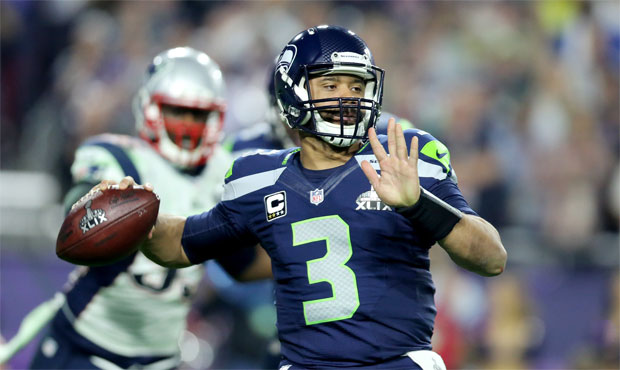Brady Henderson
Unlike last offseason, Seahawks have running backs to replace Marshawn Lynch
 Assuming he recovers as planned from his ankle injury, Thomas Rawls is in line to replace Marshawn Lynch as the Seahawks' starting running back. (AP)
Assuming he recovers as planned from his ankle injury, Thomas Rawls is in line to replace Marshawn Lynch as the Seahawks' starting running back. (AP)
Last offseason, when the Seahawks gave Marshawn Lynch a new contract that came with a significant raise, it reflected his standing as one of the NFL’s top running backs as well as two other realities: He was considering retirement and Seattle didn’t have any viable alternatives.
The Seahawks couldn’t afford to lose him a year ago. But with Thomas Rawls coming off a stellar albeit injury-shortened rookie season, Seattle is in much better position to replace Lynch now that he is indeed calling it a career.
Rawls is in line to be Seattle’s primary ball-carrier in 2016 while Christine Michael, who’s set to be a restricted free agent, represents a solid backup option after making a strong impression in his second stint with the team.
Seattle’s running game didn’t miss a beat last season with Rawls serving as the lead back during two stretches, first when Lynch was dealing with calf and hamstring injuries then when he went down with an abdominal injury. In fact, Rawls was much more productive than Lynch, gaining 906 yards from scrimmage compared to 497 despite playing fewer snaps.
Related: What to make of the Seahawks’ reported interest in DeMarco Murray
Rawls made seven starts, appeared in 13 games and rushed for 830 yards with four touchdowns before he broke his ankle in Week 14. His 5.7 yards-per-carry average was best among qualified rushers by a wide margin, with the next closest running back – Philadephia’s Ryan Mathews – more than a half-yard behind at 5.1. Rawls also led the league in average yards after contact per rush at 2.7, according to ESPN Stats & Information.
The only potential concern with Rawls is if he doesn’t recover as planned from his ankle injury, which also included ligament damage.
Rawls wasn’t in the picture yet last March when the Seahawks coaxed Lynch back with a hefty extension. Seattle’s other running backs at the time were Michael and Robert Turbin, neither of whom had established himself as a viable starting candidate. Turbin had carved out a role in 2-minute situations but had never carried more than 80 times in any of his three seasons while Michael had hardly played in either of his two. Both were gone by the time the season started, Turbin waived with an injury designation and Michael traded.
The promise that Rawls had shown that offseason helped Seattle make those moves.
What Michael showed upon his return to the Seahawks late last season makes him worthy of strong consideration for a backup role in 2016 and possibly beyond. Traded to Dallas for what turned out to be a seventh-round pick, Michael was waived by the Cowboys in November and ended up back in Seattle following a stint on Washington’s practice squad.
He averaged more than 4.9 yards per carry over the final three regular-season games as Seattle went with a rotation of rushers once Rawls went down. Michael showed a greater attention to ball security, which was an issue over his first two seasons. Just as important, Pete Carroll and other coaches lauded Michael for the way he handled himself off the field as well.
Michael’s status as a restricted free agent will make it relatively easy for the Seahawks to bring him back. The lowest-level RFA tender would amount to a one-year deal worth around $1.7 million, depending on how much the salary cap increases from last season.
Fred Jackson and Bryce Brown are the other two tailbacks on Seattle’s roster, though both will be unrestricted free agents. Jackson was solid but not spectacular last season as the Seahawks’ third-down back. He’ll turn 35 next week, and while he was and would still be relatively inexpensive, Seattle may want to fill that role with a younger, more athletic player.
Brown, 24, was on and off Seattle’s roster last year but didn’t play until the final three weeks of the regular season, when he averaged 2.9 yards on 25 carries with one touchdown. He’s an option for a backup spot.
The Seahawks could also draft a running back and/or sign an undrafted free agent, but in all likelihood, any rookie they bring in wouldn’t affect the top end of the depth chart. In Rawls, the Seahawks have a proven replacement for Lynch now that his retirement is a reality as opposed to an eventuality for which Seattle was previously unprepared.

























Comments